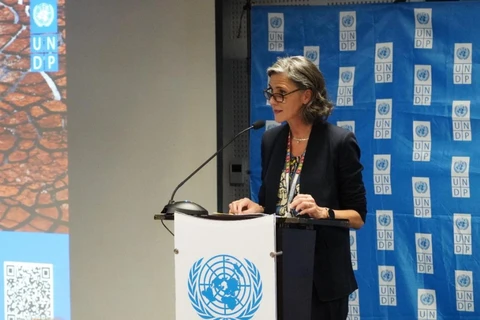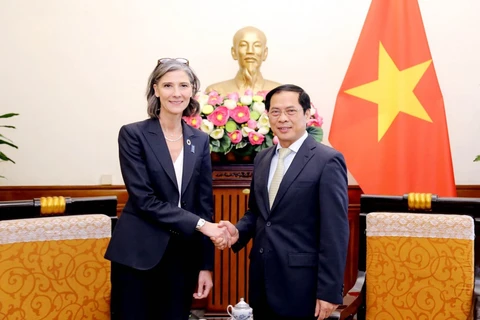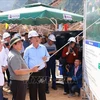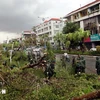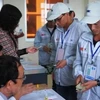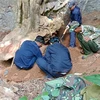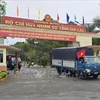Hanoi (VNS/VNA) - The Ministry of Science and Technology, UNDP in Vietnam, and UNDP SDG Impact co-hosted a conference in Hanoi last week with policymakers, experts, investors, and businesses to explore barriers and opportunities to unlocking private investment to accelerate the development of science and technology (sci-tech) and innovation in Vietnam.
Vietnam has enjoyed over three decades of uninterrupted economic growth to become a popular destination for private investors. However, socio-economic challenges remain, and the impact of the COVID-19 pandemic has slowed progress. Private capital and blended finance investments will continue to be an important component of Vietnam’s sustainable development.
Against this backdrop, the Government of Vietnam has made a strong commitment to meet the Sustainable Development Goals (SDGs) by the 2030 Agenda through its National Action Plan 2030. Sci-tech and innovation are considered among the main drivers for socio-economic development in the country, as indicated in many regulatory documents, and are key enablers for achieving the SDGs.
However, Vietnam’s public and private investment in science and technologies is relatively low compared to the global average. At less than half a percent of GDP, investment rates are almost five times lower than the average sci-tech investment rate of 2.23%.
Unlocking private capital requires robust market intelligence and strong investment relationships. Participants in the conference shared good international practices to attract private investment in sci-tech and innovation development, exchanged insights around SDG investment areas in Vietnam, as well as existing and potential barriers that need to be overcome when investing in sci-tech and innovation with the aim of generating a greater impact on society, the environment, and the economy.
During the conference, the Vietnam SDG Investor Map (the Map) was launched to provide policymakers, investors, and relevant stakeholders with market intelligence to direct their capital and activity toward SDG-aligned investment themes and business models, known as Investment Opportunity Areas (IOAs). This serves as a basis for Vietnam to invest in SDG-priority areas to generate profit and consider environmental and social outcomes. The Map was made possible with support from the non-profit Centre for Impact Investing and Practices (CIIP), UNDP SDG Impact’s anchor partner in the ASEAN region.
The Map will be used to guide the private sector to where funding is needed most within the country, and they are encouraged to apply sci-tech innovation and efforts to realise the IOAs. Using UNDP SDG Impact’s robust methodology, the Map has identified 14 IOAs across 6 SDG priority sectors that require funding, and match the Government’s policies, including Education, Healthcare, Food & Beverages, Infrastructure, Renewable Energy and Financial Services.
The Map also identified seven white spaces which are IOAs that have growth potential and are aligned with the national development needs, but where Government policies can go further to foster private sector investment participation.
To accelerate private investment in sci-tech and innovation development, the Ministry of Science and Technology, UNDP Vietnam and its partners will facilitate dialogues among ministries, investors, academia, experts, and businesses to identify solutions to overcome existing barriers and contribute to the development of sci-tech and innovation in Vietnam.
The market intelligence from the Map is freely available on the SDG Investor Platform./.
Vietnam has enjoyed over three decades of uninterrupted economic growth to become a popular destination for private investors. However, socio-economic challenges remain, and the impact of the COVID-19 pandemic has slowed progress. Private capital and blended finance investments will continue to be an important component of Vietnam’s sustainable development.
Against this backdrop, the Government of Vietnam has made a strong commitment to meet the Sustainable Development Goals (SDGs) by the 2030 Agenda through its National Action Plan 2030. Sci-tech and innovation are considered among the main drivers for socio-economic development in the country, as indicated in many regulatory documents, and are key enablers for achieving the SDGs.
However, Vietnam’s public and private investment in science and technologies is relatively low compared to the global average. At less than half a percent of GDP, investment rates are almost five times lower than the average sci-tech investment rate of 2.23%.
Unlocking private capital requires robust market intelligence and strong investment relationships. Participants in the conference shared good international practices to attract private investment in sci-tech and innovation development, exchanged insights around SDG investment areas in Vietnam, as well as existing and potential barriers that need to be overcome when investing in sci-tech and innovation with the aim of generating a greater impact on society, the environment, and the economy.
During the conference, the Vietnam SDG Investor Map (the Map) was launched to provide policymakers, investors, and relevant stakeholders with market intelligence to direct their capital and activity toward SDG-aligned investment themes and business models, known as Investment Opportunity Areas (IOAs). This serves as a basis for Vietnam to invest in SDG-priority areas to generate profit and consider environmental and social outcomes. The Map was made possible with support from the non-profit Centre for Impact Investing and Practices (CIIP), UNDP SDG Impact’s anchor partner in the ASEAN region.
The Map will be used to guide the private sector to where funding is needed most within the country, and they are encouraged to apply sci-tech innovation and efforts to realise the IOAs. Using UNDP SDG Impact’s robust methodology, the Map has identified 14 IOAs across 6 SDG priority sectors that require funding, and match the Government’s policies, including Education, Healthcare, Food & Beverages, Infrastructure, Renewable Energy and Financial Services.
The Map also identified seven white spaces which are IOAs that have growth potential and are aligned with the national development needs, but where Government policies can go further to foster private sector investment participation.
To accelerate private investment in sci-tech and innovation development, the Ministry of Science and Technology, UNDP Vietnam and its partners will facilitate dialogues among ministries, investors, academia, experts, and businesses to identify solutions to overcome existing barriers and contribute to the development of sci-tech and innovation in Vietnam.
The market intelligence from the Map is freely available on the SDG Investor Platform./.
VNA


